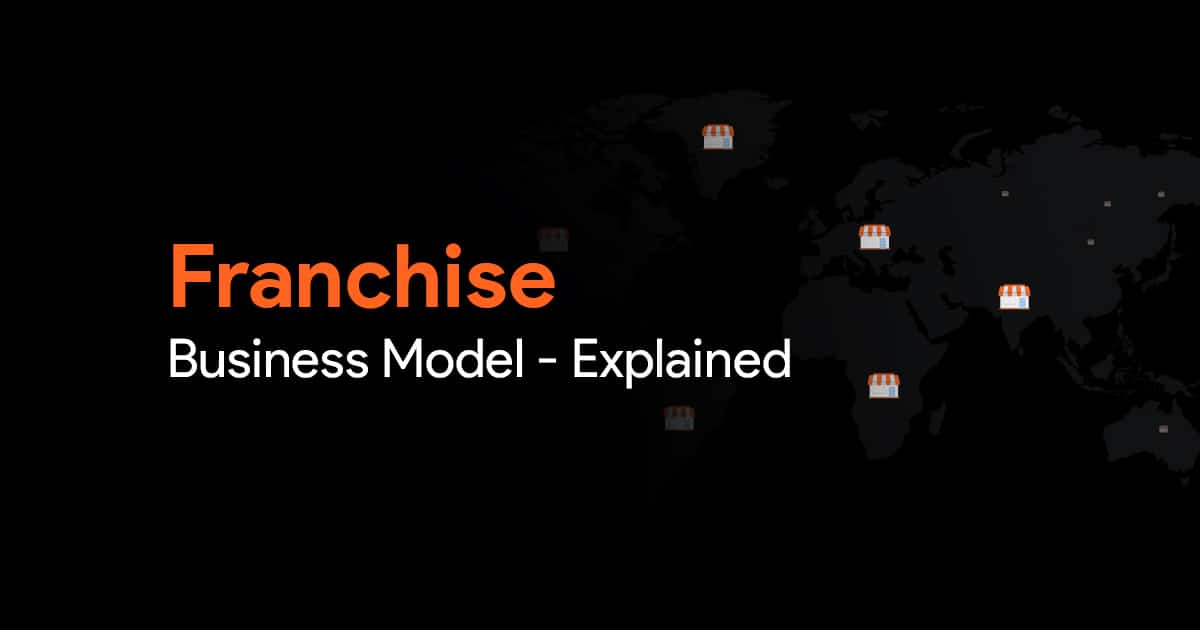- Understanding Why Stakeholders Reject Presentations
- Immediate Response: Maintaining Professionalism and Composure
- Regrouping Internally: Debrief and Extract Lessons
- Re-engaging Stakeholders Strategically
- Redefining and Resetting Scope with Stakeholder Involvement
- Developing a Comprehensive Recovery Plan
- Preventing Future Rejections: Proactive Stakeholder Management
- Conclusion: Embracing Rejection as Part of the Leadership Journey
What to Do When Stakeholders Reject Your Entire Presentation (Recovery Plan Included)

You’ve spent weeks preparing the perfect presentation. Your team has meticulously crafted every slide, rehearsed responses to potential questions, and aligned all the data to support your recommendations. Then, the moment arrives: you deliver your presentation to key stakeholders, and instead of the approval you expected, you’re met with a wall of rejection. The entire presentation, dismissed. Your carefully constructed plan, dismantled. Your confidence, shaken.
I’ve been there. Many of us who lead teams responsible for creating and delivering high-stakes presentations have experienced that sinking feeling when stakeholders reject our work. It’s not just disappointing. It can feel like a professional crisis that threatens project timelines, team morale, and even your credibility.
But here’s what I’ve learned through years of managing presentation teams: stakeholder rejection isn’t the end of the road. It’s simply a detour on the path to success. How you respond to this rejection will determine whether your project ultimately fails or succeeds in a new, potentially better direction.
In this comprehensive guide, I’ll walk you through a structured stakeholder rejection recovery process that will help you transform this challenging situation into an opportunity for growth. We’ll explore why stakeholders reject presentations, how to respond professionally in the moment, strategies for regrouping with your team, and a detailed recovery plan to get back on track.
Understanding Why Stakeholders Reject Presentations
Before you can effectively address rejection, you need to understand what caused it. Stakeholder rejection rarely happens in a vacuum. It’s usually the culmination of several underlying issues that weren’t adequately addressed before the presentation.
According to research by Henrico Dolfing, there are three primary causes of stakeholder resistance:
1. Lack of information: Stakeholders don’t fully understand what’s being proposed or why it matters.
2. Emotional reactions: Stakeholders feel threatened by the changes being proposed.
3. General dislike of change: Some stakeholders resist any modification to existing processes or systems.
(source)
Additional reasons for presentation rejection often include:
– Misalignment with business objectives: Your proposal doesn’t clearly connect to the organization’s strategic priorities.
– Poor timing: Your recommendation arrives during budget constraints or organizational changes.
– Political factors: Your proposal might unintentionally threaten someone’s territory or authority.
– Communication style mismatch: Your presentation style didn’t match the stakeholders’ preferences.
– Insufficient evidence or unclear ROI: You didn’t convincingly demonstrate the value proposition.
Understanding the specific reason behind your rejection is the first step toward recovery. In my experience, the rejection often has less to do with your actual ideas and more to do with how those ideas were communicated or contextually positioned.
Immediate Response: Maintaining Professionalism and Composure
The moments immediately following rejection are critical. Your response sets the tone for everything that follows. This isn’t the time for defensiveness, anger, or visible disappointment. It’s the moment to demonstrate professionalism and resilience.
The Turbochargers, experts in stakeholder management, recommend reframing rejection as simply one step in a larger journey. They emphasize that resilience in these moments is crucial for maintaining productive stakeholder relationships. (source)
Here’s a professional script template you can adapt when facing stakeholder rejection:
“Thank you for your candid feedback. I appreciate your thoroughness in reviewing our proposal. While I understand this direction doesn’t align with your current expectations, I value the insights you’ve shared today. I’d like to take some time to regroup with my team to better understand your concerns and return with a revised approach that better addresses your needs. Would it be possible to schedule a follow-up meeting in [timeframe] to discuss specific aspects of the proposal that didn’t resonate with you?”
This response accomplishes several important things:
– Acknowledges the stakeholders’ position without defensiveness
– Demonstrates professionalism and resilience
– Keeps the dialogue open
– Sets expectations for next steps
– Positions you as solution-oriented rather than problem-focused
During this interaction, take detailed notes about specific objections raised. Ask clarifying questions to ensure you understand the precise nature of the concerns. This information will be invaluable when you regroup with your team.
Regrouping Internally: Debrief and Extract Lessons
Once you’ve professionally navigated the initial rejection, it’s time to gather your team for a thorough debrief. This meeting should happen as soon as possible after the rejection while details are fresh in everyone’s mind.
The Turbochargers recommend a structured debriefing process that extracts actionable lessons from the rejection experience. (source)
Here’s how to conduct an effective post-rejection debrief:
1. Create a judgment-free zone: Begin by establishing that the purpose is learning, not blame. Emphasize that rejection is a normal part of professional growth.
2. Objectively review what happened: Walk through the presentation chronologically, noting stakeholder reactions at different points.
3. Identify specific objections: Categorize the feedback you received. Was it about the content, delivery, timing, or something else entirely?
4. Analyze stakeholder dynamics: Discuss the interpersonal dynamics you observed. Were there conflicting agendas among stakeholders? Did one influential person sway others?
5. Evaluate your preparation process: Consider how your team prepared. Did you involve the right people? Did you gather sufficient intelligence about stakeholder expectations?
6. Document lessons learned: Create a concrete list of insights that will inform your recovery plan.
During this process, it’s essential to maintain team morale. Remind your team that many successful initiatives faced initial rejection before ultimately succeeding. This setback doesn’t reflect on their capabilities. It’s simply part of the collaborative process.
Re-engaging Stakeholders Strategically
After your internal debrief, it’s time to re-engage with stakeholders, but this time with a more strategic approach based on what you’ve learned.
Darzin’s blog on stakeholder re-engagement outlines 12 strategies to reconnect effectively, including switching communication modes (like emails, phone calls, social media, or surveys) based on stakeholder preferences. They emphasize respecting communication preferences while avoiding overwhelming stakeholders with too many contacts. (source)
Colliers Project Leaders highlight five key stakeholder engagement strategies that are particularly valuable after a rejection:
1. Know your audience deeply: Research their priorities, communication styles, and decision-making criteria.
2. Prepare participants in advance: Send preliminary questions or materials that prime them for the conversation.
3. Frame discussions effectively: Position the conversation in terms of shared goals and mutual benefits.
4. Make meetings interactive: Use collaborative techniques that give stakeholders ownership in the process.
5. Build consensus incrementally: Focus on points of agreement before addressing areas of disagreement.
(source)
When re-engaging, I recommend starting with one-on-one conversations with key stakeholders before attempting another group presentation. These individual conversations allow you to:
– Build personal rapport
– Understand each stakeholder’s specific concerns
– Identify potential champions for your revised approach
– Discover political dynamics that might have influenced the rejection
– Test new ideas in a lower-risk setting
During these conversations, use active listening techniques to show you’re genuinely internalizing their feedback. Ask questions like:
– “What aspects of our proposal concerned you the most?”
– “What would make this proposal more compelling for you?”
– “How would you measure success for this initiative?”
– “What constraints or considerations should we be aware of that might not have been explicitly discussed?”
Document these insights meticulously. They’ll form the foundation of your recovery plan.
Redefining and Resetting Scope with Stakeholder Involvement
With deeper stakeholder insights in hand, you can now begin the process of redefining your proposal. The key difference this time is that you’ll actively involve stakeholders in shaping the new direction.
Join The Collective recommends several strategies for turning stakeholder resistance into support:
1. Use storytelling to make your case: Create a compelling narrative that addresses emotional as well as logical concerns.
2. Demonstrate clear benefits: Show specifically how your proposal will improve stakeholders’ situations.
3. Involve stakeholders in pilot programs: Let them experience the benefits on a small scale before committing fully.
(source)
PL Projects emphasizes that transparent communication forms the foundation of any effective recovery plan. They recommend implementing changes in phases with continuous monitoring and clear feedback loops to maintain stakeholder trust. (source)
Based on these insights, here’s a process for redefining your project scope with stakeholder involvement:
1. Create a stakeholder co-creation session: Invite key stakeholders to participate in a workshop focused on reshaping the proposal.
2. Begin with shared objectives: Start by establishing agreement on the fundamental goals everyone shares, even if there’s disagreement on how to achieve them.
3. Incorporate stakeholder ideas: Actively integrate suggestions from stakeholders into the new plan, giving them ownership in the solution.
4. Use visual collaboration tools: Employ tools like mind maps, journey maps, or digital whiteboards that make the collaborative process tangible.
5. Document agreements incrementally: As consensus emerges on different aspects of the plan, document these agreements to create momentum.
6. Address concerns transparently: Rather than avoiding difficult topics, bring them into the open and work through them collaboratively.
This collaborative approach transforms the dynamic from “your rejected proposal” to “our evolving solution.” It distributes ownership across the stakeholder group and significantly increases the likelihood of approval for the revised plan.
Developing a Comprehensive Recovery Plan
Now it’s time to formalize your recovery strategy into a structured plan that will guide your team back to success. PL Projects recommends a phased approach to project recovery with continuous monitoring and clear feedback loops. (source)
Here’s a three-phase recovery plan framework:
Phase 1: Stabilization (1-2 weeks)
– Conduct stakeholder alignment interviews: Meet individually with all key decision-makers.
– Perform root cause analysis: Identify the fundamental reasons for the initial rejection.
– Establish new success criteria: Define clear, measurable outcomes that stakeholders agree represent success.
– Create a revised communication plan: Develop a strategy for keeping stakeholders appropriately informed.
– Reset team expectations and morale: Have honest conversations about the new direction and timeline.
Phase 2: Recalibration (2-4 weeks)
– Develop a revised proposal: Create a new approach incorporating stakeholder feedback.
– Test concepts iteratively: Share elements of the new direction with select stakeholders before finalizing.
– Create a stakeholder-specific value proposition: Articulate how the new proposal specifically addresses each stakeholder’s concerns.
– Prepare visual aids that highlight changes: Develop materials that clearly show how you’ve responded to feedback.
– Build a risk mitigation plan: Identify potential obstacles and develop contingency plans.
Phase 3: Relaunch (1-2 weeks)
– Pre-brief key influencers: Share the revised proposal with influential stakeholders before the formal presentation.
– Deliver a transformed presentation: Present the new approach, explicitly addressing previous concerns.
– Emphasize stakeholder contributions: Highlight how stakeholder input shaped the improved proposal.
– Establish clear next steps: Define the immediate actions following approval.
– Create a feedback mechanism: Set up a structured way for stakeholders to provide ongoing input.
Throughout all phases, maintain transparent communication about progress. Regular updates build trust and demonstrate your commitment to addressing stakeholder concerns. As PL Projects emphasizes, honest forecasting and clear feedback loops are essential for maintaining stakeholder confidence during recovery. (source)
Preventing Future Rejections: Proactive Stakeholder Management
While recovering from rejection is important, preventing future rejections is even better. Novus Insights offers several proven strategies for managing challenging stakeholders effectively:
1. Tailor communication plans to preferences: Different stakeholders prefer different communication channels and frequencies.
2. Keep messages concise and actionable: Focus on what stakeholders need to know and do.
3. Clarify technical language: Avoid jargon that might create misunderstandings.
4. Establish regular check-ins: Don’t wait for formal presentations to gauge stakeholder sentiment.
(source)
Based on these insights and my own experience, here are additional prevention strategies to implement:
Stakeholder Analysis
Conduct thorough stakeholder analysis before beginning any significant presentation development. Map each stakeholder’s:
– Level of influence
– Key interests
– Potential concerns
– Communication preferences
– History with similar initiatives
– Relationships with other stakeholders
This analysis helps you anticipate objections and tailor your approach accordingly.
Incremental Validation
Rather than developing an entire presentation before seeking feedback, validate your approach incrementally:
– Share your proposed outline early
– Test key concepts in informal settings
– Present data visualizations for feedback before finalizing
– Run your core argument by a friendly stakeholder
This incremental approach allows you to catch misalignments early when they’re easier to address.
Pre-presentation Allies
Identify potential champions among your stakeholders and involve them early:
– Share your thinking during development
– Ask for their guidance on positioning
– Address their concerns proactively
– Secure their verbal support before the main presentation
Having influential supporters in the room significantly increases your chances of success.
Expectation Setting
Be explicit about what you’re asking for and what success looks like:
– Clarify the decision you need
– Outline alternative options you’ve considered
– Be transparent about limitations or tradeoffs
– Set realistic expectations about implementation and results
Clear expectations prevent misunderstandings that can lead to rejection.
Conclusion: Embracing Rejection as Part of the Leadership Journey
Stakeholder rejection is never pleasant, but with the right approach, it can become a catalyst for developing stronger proposals and deeper stakeholder relationships. The stakeholder rejection recovery process I’ve outlined transforms what feels like a professional setback into an opportunity for growth and refinement.
Remember these key principles:
1. Respond to rejection with professionalism and curiosity rather than defensiveness.
2. Extract meaningful lessons through thorough, blame-free debriefing.
3. Re-engage stakeholders strategically to understand their true concerns.
4. Involve stakeholders in redefining the scope to create shared ownership.
5. Implement a structured, phased recovery plan with clear communication.
6. Use the experience to implement proactive prevention strategies for future presentations.
As you navigate stakeholder rejection, remember that many of history’s most successful initiatives faced initial resistance. Your response to rejection doesn’t just determine the fate of your current proposal. It showcases your leadership capacity and resilience.
The next time your presentation faces rejection, take a deep breath, refer back to this recovery plan, and transform that challenging moment into the beginning of an even more successful journey.
By approaching stakeholder rejection as a natural part of the collaborative process rather than a terminal failure, you’ll develop greater resilience, stronger stakeholder relationships, and ultimately, more successful outcomes for your team and organization.


